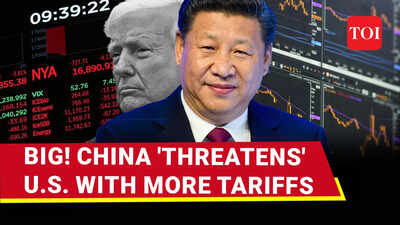- News
- Business News
- India Business News
- Donald Trump's reciprocal tariffs New world order – beyond WTO’s rule-based trade
Trending
Donald Trump's reciprocal tariffs New world order – beyond WTO’s rule-based trade
The announcement of reciprocal tariffs is likely to open up fresh rounds of bilateral tariff negotiations and unilateral actions. This may also result in re-alignment of supply chains which were thus far reliant on rule-based trade under WTO.
By Himanshu Tewari
The US has proposed a 26% discounted tariff on Indian exports with effect from April 09, 2025. The measure is to counter higher Indian tariffs on US products. This deviates from the usual practice of product-based tariff change; in this case the US has proposed country-specific ‘discounted’ reciprocal tariff applicable on all products.
Discounted reciprocal levy excludes products with prior levy under Section 232 like steel, aluminum, automotive goods, announced in the February/ March 2025. It further excludes copper, pharmaceuticals, semiconductors, and lumber articles which may be construed as products of strategic advantage for the US. This is a relief for the Indian pharmaceutical industry which is the second highest contributor to overall exports to the US.
Interestingly, while products from most countries will incur a baseline tariff at the rate of 10%, countries with a larger trade deficit will incur tariff at the rate of up to 50%. This will directly impact exports from jurisdictions like Cambodia (49%), Vietnam (46%), Bangladesh (37%), China (34%) and Indonesia (32%). The differential duty rates between the products from different countries could possibly result in comparative tariff advantage, subject to applicable trade agreements.
Specifically, India may see this as a comparative advantage vis-à-vis its key competing jurisdictions mentioned above. We will also have to keep in mind the supply chain considerations including the proximity to the US market and lower tariff rates enjoyed by Canada and Mexico under USMCA.
The announcement of reciprocal tariffs is likely to open up fresh rounds of bilateral tariff negotiations and unilateral actions. This may also result in re-alignment of supply chains which were thus far reliant on rule-based trade under WTO.
The method for calculating effective tariff requires detailed examination to ensure a comprehensive understanding and effective response. US reciprocal tariff encompasses the cumulative impact of tariff, technical barriers, currency manipulations and exorbitant VAT/GST applied by other countries. It appears that the effective tariff has been arrived at based on the ratio of US exports and US imports to other countries.However, the computation method itself may be subject to debate.
India's measured response to the ‘Liberation Day’ tariff announcement will follow a two-pronged strategy.
Firstly, it will involve significant unilateral decisions to address tariff sensitivities highlighted by the US administration.
Secondly, it will include bilateral discussions aimed at consultative resolution of issues at the product level, transitioning from general country-specific tariffs to mutually agreed product-level tariffs.
There are open questions which would require further detailing and clarifications. Illustratively, whether the reciprocal tariff will apply on goods satisfying the origin criteria under multilateral/ bilateral Free Trade Agreements or under Generalised System of Preferences (‘GSP’). Also, whether the reciprocal tariff will be computed over and above the existing tariff notified under S. 301 of the Trade Act, 1974.
For protecting market share and improving market access of the products, businesses may have to revisit the operating model, evaluate alternate sourcing locations and explore distribution of increased cost across the value chain to reduce adverse impact on the business. Revisiting the operating model may include exploring the knocked down import and assembly model, localization of component sourcing or partial shifting of manufacturing to advantageous tariff jurisdictions like Europe, Canada and Mexico.
The ‘discounted’ reciprocal tariff will change subject to unilateral actions by the countries and bilateral discussion with the US. It is expected that the new stable state of tariff will evolve over a period of time. During the transition phase from now till the new normal emerges, businesses will have to be agile and responsive to adapt to further tariff shifts which may be expected from the US and in retaliation by other countries.
(The author is Himanshu Tewari, Partner – Trade and Customs, KPMG in India)

About the Author
TOI Business ExpertsEnd of Article
Follow Us On Social Media

















